Small acts of kindness can positively change the feelings and attitudes of everyone around you!
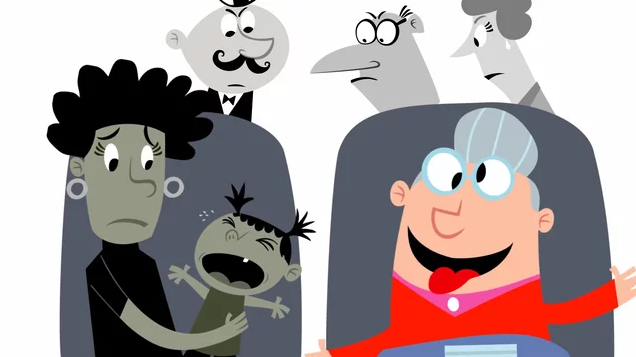

Small acts of kindness can positively change the feelings and attitudes of everyone around you!
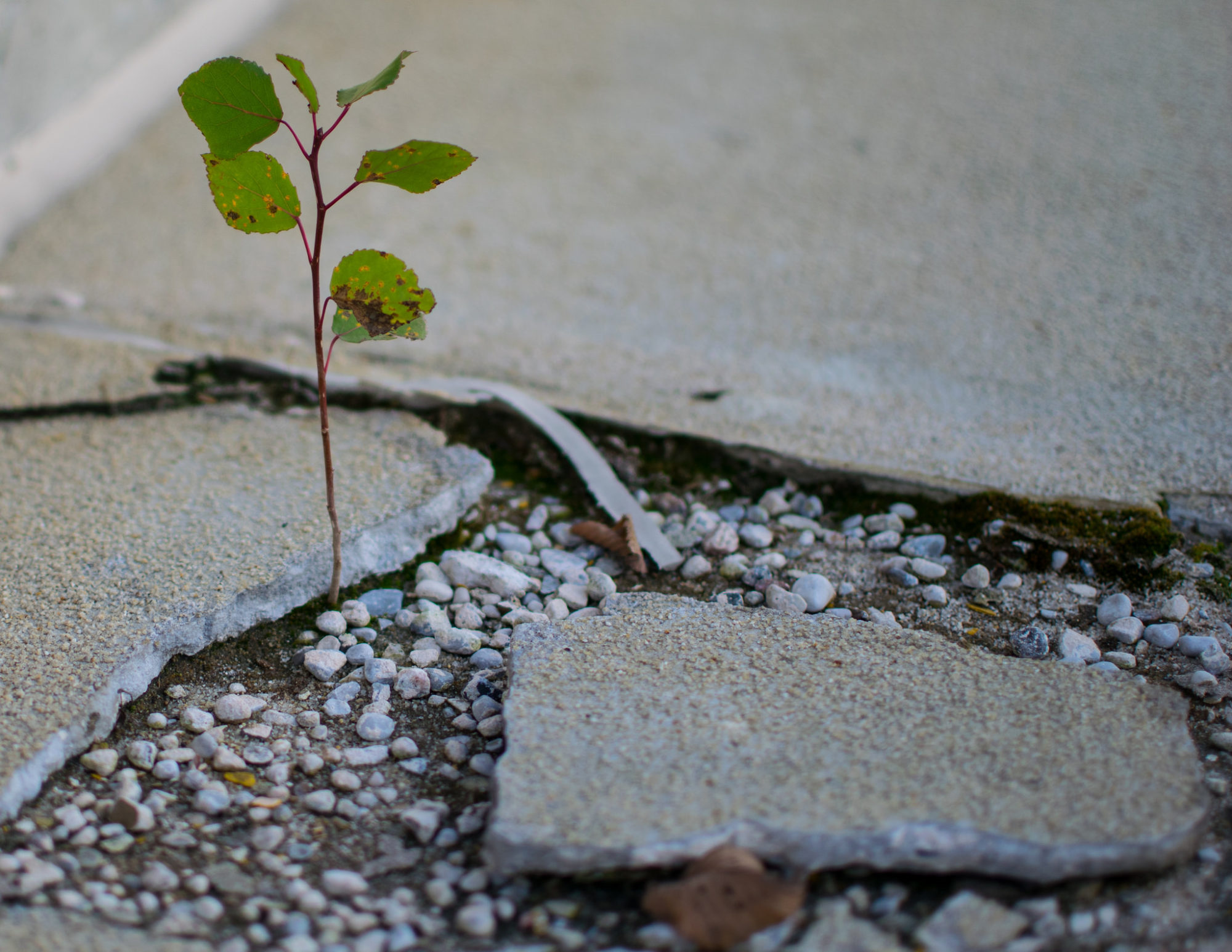
It’s not that I’m so smart, it’s just that I stay with problems longer.” — Albert Einstein
When I first started writing about how to foster “grit” in kids years ago, I thought I’d found a parenting silver bullet.
Early research from the celebrated psychologist Angela Duckworth showed that grit—or “perseverance and passion for long-term goals”—is one of the best predictors of elite performance, whether in the classroom or in the workforce. This was great news, it seemed to me, because while we can’t control kids’ (or our own) intelligence, we can grow grit, dramatically influencing their odds of succeeding.
But my thinking about hard work and grit has changed in the last few years, especially having recently read Duckworth’s excellent new book, Grit: The Power of Passion and Perseverance. It’s definitely not a panacea for our high-pressure, low-happiness culture.
Let me explain. On the one hand, I credit most of my success to my single-minded and relentless pursuit of task completion. In high school and college, I studied harder than anyone I knew. I did ALL my homework, sometimes more than once. (My high-school English teacher, Michael Mulligan, still publicly teases me for re-writing the paper I wrote on the Lord of the Flies a half dozen times, a blatant grade-grubber trying desperately to improve the B+ he originally gave me.)
On the other hand, I also credit the anxiety disorder I suffered from in my early 20s to my single-minded and relentless pursuit of task completion. See, until my mid-30s, I did pretty much everything I thought I “should” do, as perfectly as I could. I also did everything everyone else thought I should do. I people-pleased up the wazoo.
I was nothing if not persistent. I would have maxed out Duckworth’s Grit Scale, giving myself a 5 out of 5 on items like this:
“I don’t give up easily”
“I am a hard worker”
“I finish whatever I begin”
“I am diligent”
“I have overcome setbacks to conquer an important challenge”
But actually, I wasn’t all that gritty in the way that Duckworth actually defines grit (vs. how she measures it). Duckworth defines grit as persistence AND passion towards one’s long term goals. Mostly, I was just perfectionistic and persistent.
In many realms, I was missing the passion part of the grit equation. I was driven by fear, not love. I knew exactly what other people wanted me to pursue, and I could do it. And because I was so clear about what other people expected of me, I was sometimes a little shaky about what I really wanted to pursue for myself.
So that is why I deeply believe that grit isn’t something we should measure in adolescents to see if they can hack the stress that an academic institution is going to hurl their way. Nor should we admire or foster a character trait we call “grit” but that is really relentless, persistent perfectionism, absent the intrinsic motivation. Passionless persistence might lead to achievement, but it is joyless, anxious achievement at best.
But true grit — the kind that is equal measures passion and persistence — is a solid strategy for both success AND happiness. And it is something we can easily foster in ourselves, and in our children.
First, find and fuel passion. If you are a parent or teacher looking to foster grit in kids, the first step is to let go of what you want for them, and watch for what they are passionate about. Then, simply support their passions.
In order for kids to even know what they are interested in, they need exposure to a lot of different things. They will never know that they are passionate about tennis or Shakespeare or rock-climbing or piano if they never have a chance to try those things out. Parents, teachers, and coaches are important here; we must be willing and able to provide racquets and lessons and instruments. The first sparks of a passion need oxygen before they will ignite.
Moreover, we must be willing to let an initial interest develop from fun, and from play. It has to have an ease to it at first. Adults can encourage, but they must remember that joy is their best tactic at this stage. A true passion never begins with hard work and practice — it begins with genuine interest and fun.
You can do this for yourself, too: Pay attention to what you actually yearn for, and practice ignoring what other (well meaning) people expect of you or even want for you. Does the thought of a particular project or activity make you feel light and free, or does it make you feel heavy? Pushing yourself towards the things that you dread may make you persistent, but it will not, ultimately, make you gritty. Or happy.
Second, practice tolerating discomfort. Given that life includes a boatload of disappointment, risk, pain and even failure, we need to develop an ironic comfort with discomfort if we are going to be able to persist in the face of challenge towards our goals.
The key is to notice where your comfort zone is, because it is often the very thing that is blocking your success and happiness. Perfectionism, ironically, used to be my comfort zone, for example. I was most “comfortable” relentlessly fulfilling everyone else’s expectations of me, and I felt uneasy and uncomfortable doing things that I feared would let other people down. It was hard for me to have the courage to pursue my own passions.
But we obviously need to have the courage to do the things that make us profoundly uncomfortable without becoming overly anxious or stressed out. Sometimes hard things are just hard things: There is difficulty, or even pain, but it isn’t worthy of a full-blown stress response. There isn’t actually anything to be afraid of.
The simplest way to increase our ability (and, frankly, willingness) to experience discomfort is to simply put ourselves in situations that make us uncomfortable. Take baby steps, and practice staying calm despite the discomfort. Keep taking deep breaths. Keep relaxing your shoulders. Notice your discomfort, and welcome it. It’s nothing to be afraid of.
Have difficult conversations. Take risks in relationships by showing people who you really are, or sharing what you are truly feeling. Let yourself notice when other people are suffering, and reach out to them; their discomfort, too, is nothing to be afraid of. Do the right thing, even when the right thing is hard.
These days, I don’t really know where I’d score on Duckworth’s Grit Scale. I practice being gritty in some arenas, downright flaky in others. In the same way that having a super-high IQ can make people so socially awkward that their relationships suffer, I think having a super-high persistence score used to threaten my happiness.
So does grit matter more than intelligence, as Duckworth’s early research implied?
It turns out that grit, at least the way it’s been measured for research, is no silver bullet. A recent meta-analysis of research on grit concluded that Duckworth’s grit scale doesn’t actually do as great a job at predicting success as the original research led us to believe.
At the same time, true grit — persistence AND passion — is clearly something we want both for our kids and for ourselves. Fortunately, the life-skills that make us gritty can be learned and practiced. When we identify what we are passionate about, and build the skills we need to be persistent in our pursuit of these passions…Watch out world. Little else will have a larger impact.
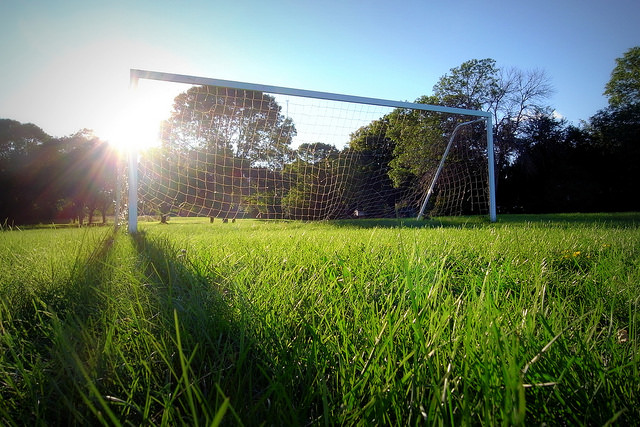
At each turn of each season, lots of achievement-oriented people set goals.
The start of the school year is my favorite time to do this for myself (I’m with Gretchen Rubin, who calls September “the other January”). I also have my teens set some goals for themselves. But we aren’t very ambitious, and for good reason.
You already know this, but it’s worth saying: More than half of people who set goals (or make resolutions) give up on them, or simply forget about them, within six months. Don’t join this failing 50 percent! Instead, follow these three research-based strategies for making resolutions that stick for a lifetime.
1. Think in terms of habits, not goals.
Your goals for the new season might include losing 10 pounds, or totally clearing your house of clutter, or finding a new job. All of these might be goals worth setting, and they all involve a lot of different behaviors — and, therefore (sorry to say this) a lot of opportunities for failure.
Simple behaviors that can become habits that automatically help you achieve your goals ultimately make better self-improvement initiatives than ambitious goals. For example, resolve to eat an apple every afternoon instead of a cookie, or spend 10 minutes each weeknight before bed cleaning out a shelf or a drawer, or send one networking email every morning before you leave for work.
For something to become a habit, there needs to be something else that triggers the new behavior — a regular, uniform stimulus that tells you its time to perform this behavior. My morning meditation is triggered by my alarm going off at about the same time every day. (And when I don’t set an alarm, I don’t usually meditate, sadly.)
If you have a habit in mind that you don’t want to do every day, choose a trigger that occurs only occasionally — i.e., at the times when you want to perform that new behavior regularly down the line. For example, “Do a 30-minute yoga video twice a week” isn’t a habit. It’s a to-do item for your task list because there’s no clear trigger, and therefore no clear way to make it a routine for you. If you want to squeeze that twice-weekly yoga into your schedule, a better approach would be to say, “I’ll pop in my 30-minute yoga video after dropping the kids off at soccer practice on Tuesday and Thursday afternoons.”
2. Bake a reward into the actual behavior, rather than holding out until you’ve achieved some far-off goal.
We human beings may say that we are pursuing happiness, but really what we tend to pursue is reward. Anything that we might desire could count as a reward: a cashmere sweater, a pretty little cupcake, attention from a mentor, a sense of accomplishment, some affection from a loved one.
When our brains identify a potential reward, they release dopamine, a feel-good chemical messenger. That dopamine rush motivates us toward the reward, creating a real sense of craving, wanting, or desire for the carrot that is being dangled in front of us.
Fortunately, we can make dopamine work for us rather than against us as we build our habits. To get into a good habit, you’ll need a really satisfying reward–ideally one that’s immediate or, even better, intrinsic to a routine.
We can do this by making the activities themselves more rewarding, or just plain more fun. This is what I did when I switched my silent, sitting meditation (a very serious, long vipassana—like eating kale for the mind) to meditating along with a Deepak Chopra recording (short, inspiring, and easy—like an iceberg wedge salad with bacon and blue cheese). I was getting a lot out of the longer vipassana meditations when I did them, but I wasn’t meditating regularly. Just as any salad is better than a diet without greens, I decided that at this stage in the game, any meditation is better than none. It might not be a sure road to enlightenment, but it’s closer than hitting snooze in the morning.
I’m also a huge fan of the “Yay me!” reward, which I learned from B.J. Fogg at Stanford. Even something as small as a short mental victory dance can trigger a little hit of dopamine, enough to tell your brain to repeat whatever you just did. So when I hear my alarm and sit up in bed, I congratulate myself. If you heard my running internal commentary, you’d think I was utterly crazy, what with the constant “Yay me! I did it again!” self-talk. But it works!
3. Prepare for failure.
Unless you are some sort of superhero, you will not be able to get into this new habit perfectly the first time. You’ll trip and fall and royally screw up. Research indicates that 88 percent of people have failed to keep a new resolution. In my experience as a human being and a coach, 100 percent of people starting a new habit lapse at some point. Faltering is a normal part of the process. It doesn’t matter if you have a lapse, or even a relapse, as much as it matters how you respond to that lapse.
So take a minute to think about what tools you need to embark on your new habit. What obstacles will you likely face? People who plan for how they’re going to react to different obstacles tend to be able to meet their goals more successfully. For example, research suggests that recovery from hip-replacement surgery depends in large part on having patients think through obstacles to their recovery and then make a specific plan for how they will deal with those obstacles.
What obstacles can you predict and plan for? Don’t forget to include the people in your life who (often unintentionally) throw up roadblocks. For example, my husband was not a fan of my morning exercise routine when he noticed how early I was going to bed, and I was successful only when I planned out how I’d respond to his attempts to convince me to stay up later with him.
In The Marshmallow Test, the celebrated psychologist Walter Mischel gives what I think is his best advice for responding to challenges: make an “implementation plan.” First, identify the “hot spots that trigger the impulsive reactions you want to control,” like your alarm going off while it is still dark, or seeing your favorite hot wings on the menu. Then, decide what you will do when the trigger goes off, phrasing your behavior plan in simple, “If-Then” terms. For example: “If my alarm goes off and I want to press snooze, I will immediately get out of bed and walk to the bathroom.” Or: “If I see hot wings on the menu and feel the urge to order them, I will immediately choose a salad to order instead.” This strategy may seem too simplistic to work, but lots of research proves it to be, as Mischel writes, “astonishingly effective.”
Finally, even with the best laid plans, lapses are still going to happen–probably over and over again. In those cases, what’s important is that you don’t beat yourself up for your lack of willpower but instead try to practice self-compassion. When we practice self-compassion, we recognize that everyone makes mistakes and falls short of their expectations for themselves at one time or another–in fact, our shortcomings are what bind us to the rest of our fellow humans. Pioneering research by Kristin Neff, of the University of Texas, has found that when people treat themselves with self-compassion–that is, they extend to themselves the same kind of understanding and kindness that they would show a friend who makes a mistake–they are actually more likely to bounce back from a failure and stay on track to meet their goals.
I love the end of the summer for the opportunity to get back into our routines and habits. This is the PERFECT time to set some goals — and to make a new resolution for the new season. As school starts again for students everywhere, what will make you and your family happier, healthier, and more successful?
If you’re serious about getting into a new habit but aren’t sure where to start, or you just need a few more tips, I have a free coaching program that you are welcome to join.
Pick the right habit (and I’ll guide you in picking the right habit) and you’ll have it well established by the end of this program. 90 Days to a New Habit is a 12-week email and text-based coaching program that is practical, do-able, and science-based. Enroll here.
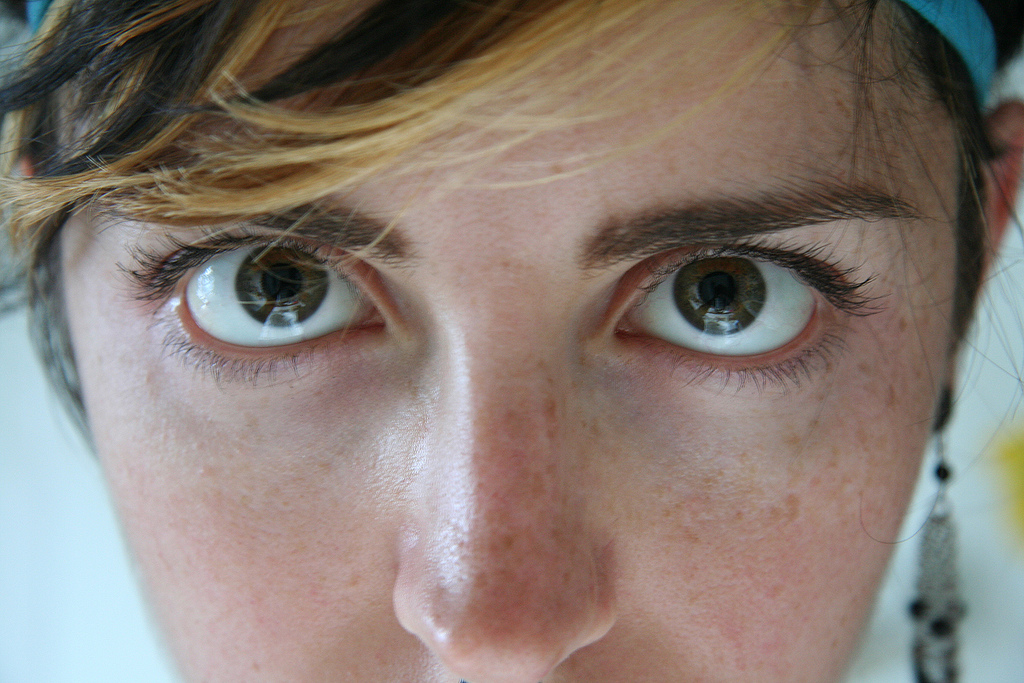
The answer is a cliché: You were probably in the shower. Creativity doesn’t come from the bathroom, we know, but it sure does seem highly correlated with it. So what is it about the shower that leads to our “aha” moments and bursts of creativity?
It’s that in the shower we are simply staring into space, washing our hair on autopilot. We aren’t checking our messages or feeds, or writing a report. We’re just day dreaming.
We may think — mistakenly — that nothing much is happening in our brains when we aren’t consciously doing something, certainly that nothing much of importance is going on. But actually, our brain lights up like a Christmas tree when we’re daydreaming. Many brain regions become active, far more than when we are focusing.
Why?
When we daydream, or relax our focus, our brain begins drawing connections between all the things that it previously didn’t see as all that connected. Importantly, the brain networks that are responsible for creative insight come online.
There’s a neuro-biological story behind this. We have two primary attentional networks in our brain: task positive and task negative, and they function like a see-saw in that only one is active at a time.
When we are focused on something, or using our willpower to do something, the task-positive attentional network is ON. (And the task negative — mind wandering, daydreaming, “time wasting” — network is OFF.) We give credit to our task-positive attentional network for all the great work we do in the world. When we are focused, we write books. We build bridges. We raise children. Our culture tells us to focus, and that that’s the only way to get anything done around here.
But when you’re staring out the window, out into space, relaxing, or driving but not listening to the radio and you let your mind wander, the task-negative brain becomes active. All those neurons start making connections between things you didn’t see before, usually at an unconscious level. This is where our creative insight comes from. We can’t solve problems or do much of anything without the insights that come from that downtime. We certainly can’t fulfill our potential without filling our need for creative insight, without nurturing our ability to draw connections. This is why we often get our best ideas in the shower…it’s the only remaining place in the world where we let ourselves do nothing!
All of this explains other research that shows that conscious, effortful thinking does nothing to improve creativity, or to help people come up with innovative solutions to problems. For example: When researchers give people a task that requires creativity (such as instructions to come up with a list of ways to use a brick), people don’t generate longer or more creative lists if they have a few extra minutes to think before they start.
What does help? Spending those few extra minutes not consciously thinking about the task, by diverting the research subjects’ attention with an unrelated task. This then gives the insight-generating part of the brain time to get to work making connections. Those new connections are, essentially, innovations that improve our performance on creative tasks.
Here’s what I want you to take away from this:
Creative insight is at the very heart of the sweet spot — that place of both power and ease, that place where we humans hit our home runs. Nothing is easier than an “aha moment” that pops effortlessly into your awareness, and nothing is more powerful.
What this means is that you will not find your sweet spot, or find flow, or do your best work, without cultivating stillness in your life, without spending a good part of each just staring into space.
That’s such a counter-culture notion that many people feel guilty and anxious staring into space. We feel important and productive when we are busy, and insignificant and lazy day dreaming. But to be successful, we don’t just need to learn to tolerate stillness, we actually need to cultivate it.
Photo courtesy of Malloreigh via Flickr.

There are so many ways to make other people’s lives better. This video inspired me to think about how I can best use my own talents to help people who might be suffering.
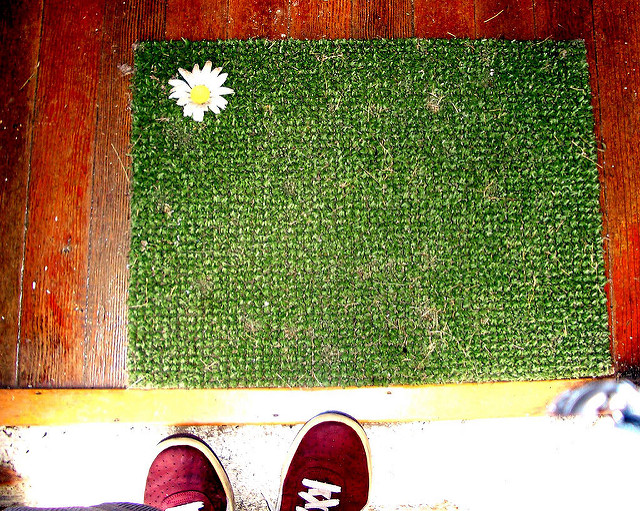
People ask me all the time what the secret to happiness is. “If you had to pick just one thing,” they wonder, “what would be the most important thing for leading a happy life?” Ten years ago, I would have told you a regular gratitude practice was the most important thing, and while that is still my favorite instant happiness booster, my answer has changed. I believe the most important thing for happiness is living truthfully. Here’s the specific advice I recently gave my kids:
Live with total integrity. Be transparent, honest, and authentic. Do not ever waiver from this; white lies and false smiles quickly snowball into a life lived out of alignment. It is better to be yourself and risk having people not like you than to suffer the stress and tension that comes from pretending to be someone you’re not, or professing to like something that you don’t. I promise you: Pretending will rob you of joy.
I’ve spent the better part of my life as a people-pleaser, trying to meet other people’s expectations, trying to keep everyone happy and liking me. But when we are trying to please others, we are usually out of sync with our own wants and needs. It’s not that it’s bad to be thinking of others – that’s a key to happiness, too – it’s that pleasing others is not the same as helping others.
People pleasing, in my extensive personal experience, is a process of guessing what other people want, or what will make them think favorably of us, and then acting accordingly. It’s an often subtle and usually unconscious attempt at manipulating other people’s perceptions of us. Anytime we pretend to be or feel something that we aren’t, we’re out of integrity with ourselves.
And anytime we’re doing something that is more about influencing what others think of us than it is about authentically expressing ourselves – even something as simple as a Facebook post that makes it seem like we are having a better day than we actually are – we end up out of integrity with ourselves.
Being out of integrity has pretty serious consequences for our happiness, and for our relationships.
Here’s what happens when we aren’t being authentic:
#1: We don’t actually fool anyone.
Say you are at work, and you’re doing your best to put on a happy face even though your home life is feeling shaky. You may not want to reveal to your work friends that you and your significant other had a major fight over the weekend, but if you pretend that you are okay – and you’re not – you’ll probably make the people around you feel worse, too. Why?
We humans aren’t actually very good at hiding how we are feeling. We exhibit microexpressions that the people we are with unconsciously register. Our microexpresssions trigger mirror neurons in the brains of people around us — so a little part of their brain thinks that they are feeling our negative feelings. So trying to suppress negative emotions when we are talking with someone — like when we don’t want to trouble someone else with our own distress — actually increases both our own stress levels and those of the people we are with – more than if we had shared our distress in the first place. (It also reduces rapport and inhibits the connection between two people.)
#2: We find it harder to focus.
Pretending takes a huge conscious effort — it’s an act of self-control that drains your brain of its power to focus and do deep work. That’s because performing or pretending to be or feel something you’re not requires tremendous willpower.
Tons of research suggests that our ability to repeatedly exert our self-control is actually quite limited. Like a muscle that tires and can no longer perform at its peak strength after a workout, our self-control is diminished by previous efforts at control, even if those efforts take place in a totally different realm.
So that little fib at the water cooler you told in order to make yourself seem happier than you actually are is going to make it hard for you to focus later in the afternoon. A performance or any attempt to hide who you really are or pretend to be something you aren’t is going to make it harder later to control your attention, your thoughts, and to regulate your emotions. It’ll increase the odds that you react more aggressively to a provocation, eat more tempting snacks, engage in riskier behaviors, and — this one is pretty compelling to me — you’ll perform more poorly on tasks that require executive function, like managing your time, planning, or organizing.
#3: We become more stressed and anxious.
Let’s just call it like it is: Pretending to be or feel something that you don’t – even if it is a small thing, and even if it is relatively meaningless, and even if it is meant to protect someone else – is a lie.
And lying, even if we do it a lot, or are good at it, is very stressful to our brains and our body. The polygraph test depends on this: “Lie Detectors” don’t actually detect lies, but rather they detect the subconscious stress and fear that lying causes. These tests sense changes in our skin electricity, pulse rate, and breathing. They also detect when someone’s vocal pitch has changed in a nearly imperceptible way, a consequence of tension in the body that tightens vocal chords.
The physiological changes that lie detectors sense are caused by glucocorticoids, hormones that are released during a stress response. And as you well know, stress hormones are bad news for your health and happiness over the long run.
Research shows that people who are given instructions for how to lie less in their day-to-day lives are actually able to lie less, and when they do, their physical health improves. For example, they report less trouble sleeping, less tension, fewer headaches, and fewer sore throats. These improvements in health are likely caused by the relative absence of a stress response.
And that’s not all: When the people in the above study lied less, they also reported improvements in their relationships and less anxiety.
We don’t lie or pretend or perform all the time, of course. But when we do, it’s important to see the consequences: increased stress, decreased willpower, impaired relationships. Although we might actually be trying to feel better by putting on a happy face for others, pretending always backfires in the end. Living inauthentically makes life hard, eliminating any possibility that we will find our flow, or that we will be able to operate from our sweet spot, that place where we have both ease and power.
If you need support in living life with more authenticity, I hope you’ll check out my latest eCourse, The Science of Finding Flow. You’ll learn the importance of letting yourself experience a full range of emotions in life — even pain and discomfort. In 9 self-paced units, I’ll teach you how to be happy while accomplishing your goals – and while still having energy left over for the things you want to do.
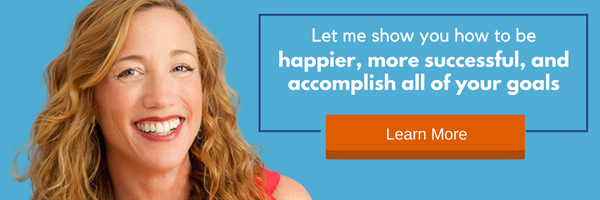
Photo by Jonathan Khoo.
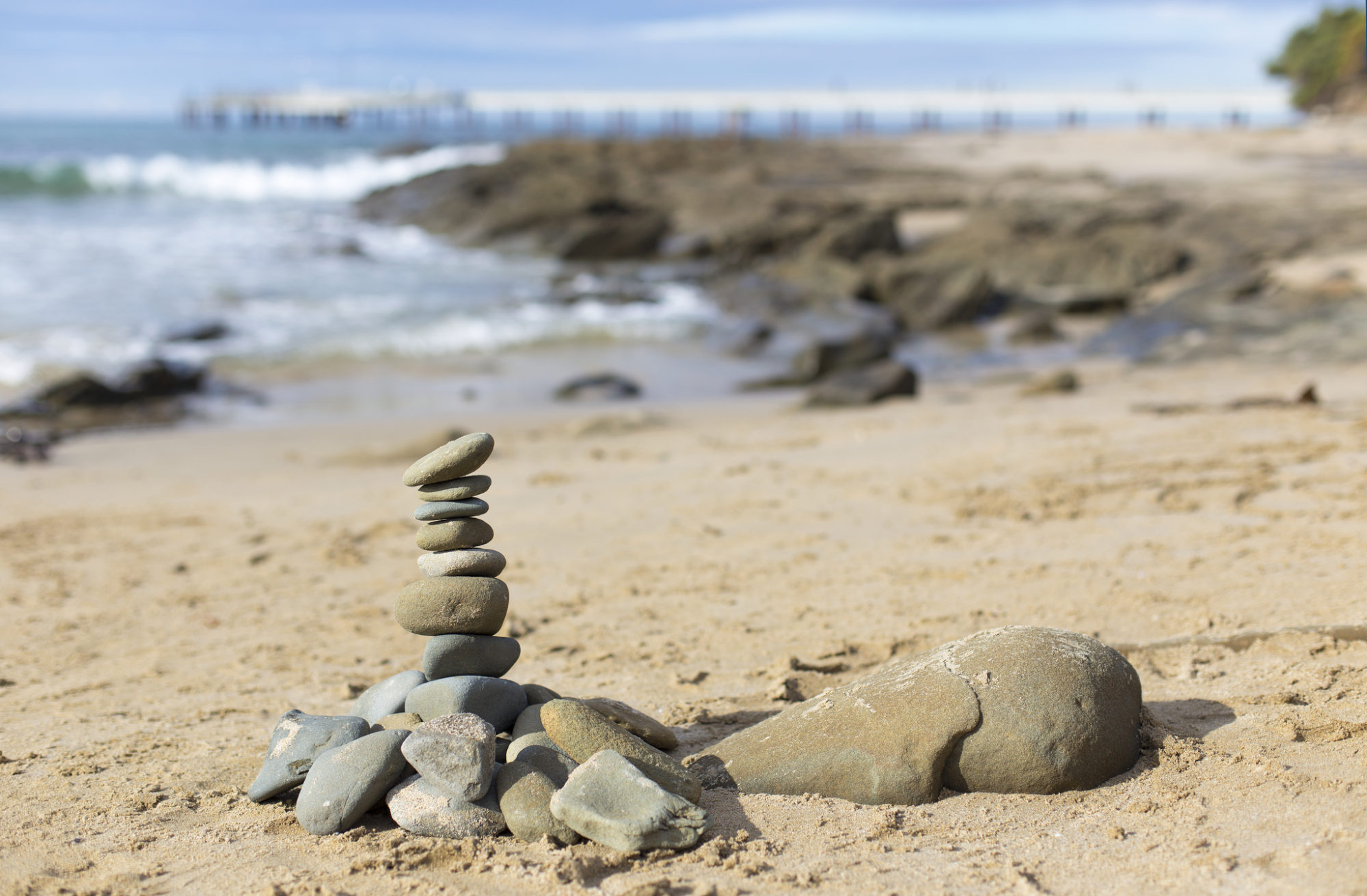
Researchers believe that the brains in both humans and animals evolved to feel calmed by repetitive behavior, and that our daily rituals and habits are a primary way to manage stress. Ever notice that you always drive to work the same way, even though there are dozens of other routes? Or that you always put deodorant on right after you brush your hair?
Each of us has hundreds of little habits that carry us through the day. The fast-paced world we live in can feel quite unpredictable, but our daily rituals can help us feel more in control, often without us ever realizing it.
But then here we are…in the middle of the summer. I don’t know about you, but my routines are falling apart. I found this old conversation between me and my daughter from the archives:
Me: Uh, let’s see. This week is Girl Scout Camp. So you need to pack a lunch. And a swim suit. And a towel. Oh wait, you have a BBQ today, so no lunch but you do need to bring—oh, darn. We’re supposed to bring dessert. How fast can we make Rice Krispie treats?
Fiona: Can’t we just buy something on the way? What time does camp start?
Me: I think 9:30. But I have a meeting at 9:00. I might drop you off early.
Fiona: I think that’s against the rules. They gave us a big rule book, you know. Who’s driving me home?
Me: Uh. Hmmm. I’ll check the schedule and call Debbie so she can text her daughter, who’ll tell you.
Fiona: Cell phones aren’t allowed at Girl Scout Camp.
Me: Oh yeah. That’s why we love it.
There is so much to love about summer, but let’s be real: The lack of routine can be a little hellish. Which makes the importance of habit for keeping us sane even more salient over the summer.
Over the years, as I’ve sought to make my summers less chaotic and more productive, I’ve learned that summer is the perfect time to practice getting into good habits and routines. Creating habits is a skill, just like learning a new sport, and when we practice, we get better.
Here are eight research-based steps for creating new routines this summer:
1. Contemplate a change you’d like to make in your life. What do you need to be healthier and happier? For example, one of my clients wants more energy to accomplish her goals; to feel better she’ll need to get more sleep, which affects our intellectual ability, our physical health, and our emotions. Habits like sleep, exercise, or meditation—anything that creates a platform for more good habits—are what Charles Duhigg, author of The Power of Habit, calls a “keystone habit.” Which of your routines has the power to change your mood or outlook on life?
2. Do your homework. We know that people go through stages when they are making changes, and before we spring into action, we need to prepare. So if more sleep is your goal, maybe you need to read up on what it takes to get a better night’s rest or buy a new pillow.
Caution: Research shows that you will probably feel tempted to stop here, after you’ve bought the book and the pillow. Feel good about getting started, but please don’t stop before you’ve actually begun.
3. Make your goal public or find a friend to hold you accountable. This is where that post-Memorial Day FAQ (“What are you doing this summer?”) comes in handy. Telling lots of folks what we are shooting for can dramatically increase the odds we’ll actually do it. For starters, comment here to let us know what habit you’d like to get in this summer.
4. Make a list. Write down all of the small changes you’ll need to make in order to reach your goal. For example, if you are trying to get more sleep, you might want to stop drinking coffee after 11:00 am, turn off the computer at 9:00 pm, get the kids to do their own laundry so you don’t have to do it after-hours, get in bed by 10:00 pm, read a book instead of watching TV in bed, etc.
5. Pick a super-easy first step. Look at your list: What is the easiest thing on it? Now, what one tiny step can you take toward that already-small thing? Maybe it would be easy for you to go to bed 10 minutes early tonight, or to replace your afternoon coffee with decaf. Do the thing that is easiest and most appealing to you.
6. Anchor that first step within an existing routine. In other words, add it to something you already do habitually. The trick is to work with the same cue that triggers the existing habit. You already are in the habit of putting toothpaste on your toothbrush at night; if you want to start flossing, your super-easy-first-step could be to get the floss out with your toothpaste.
7. Visualize success. Spend a few minutes every morning thinking about your goal. What will prevent you from succeeding? What exactly will you do when you face the obstacle you imagine? Now, revel in how you will feel when you do succeed. Soak up those warm feelings.
8. Celebrate each time you do this ridiculously easy thing every day for a week. Got into bed 10 minutes early tonight? WHOO-HOO! Have a little party in your mind. (I learned this, and a lot more, from Stanford’s BJ Fogg. I cannot recommend his free 3 Tiny Habits program highly enough.)
When you’ve accomplished one small thing, choose an equally-unambitious next step. You are more likely reach your goal by taking a series of teensy steps than if you try to do it all at once.
The key to successfully changing your life in a summer? Practice. Practice creating new habits by mastering one ridiculously easy behavior at a time, slowly making them automatic.
Here is the really good news: Your good habits are contagious, highly likely to spread to your friends, your family, and especially your children. So consider that good night’s sleep a contribution to the greater good.
If you’re looking for more support in creating a more productive environment, check out my latest eCourse, The Science of Finding Flow. In 9 self-paced units, I’ll show you how to optimize your brain so that you can allow your most joyful, productive, energetic, and successful self to emerge. I’ll teach you how to be happy while accomplishing your goals — and while still having energy left over for the things you want to do.
Photo by Ben McIver.
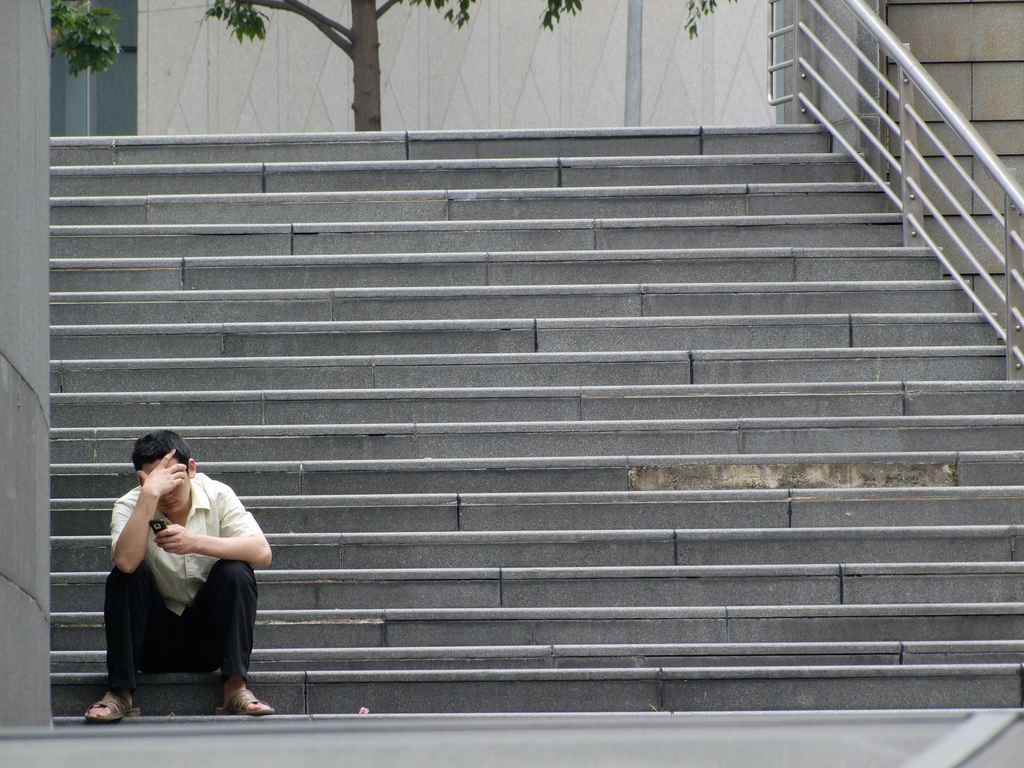
A new poll by NPR, the Robert Wood Johnson Foundation, and Harvard’s T.H. Chan School of Public Health finds extraordinary levels of workplace stress, with only about half of workplaces offering wellness or stress-reduction programs.
If your workplace is stressful and your employer isn’t helping, here are some things you can do for yourself:
If you need help managing workplace stress, I hope you’ll check out my latest eCourse, The Science of Finding Flow. In 9 self-paced units, I’ll show you how to optimize your brain so that you can allow your most joyful, productive, energetic, and successful self to emerge. I’ll teach you how to be happy while accomplishing your goals — and while still having energy left over for the things you want to do. Enroll now!
To listen to my full interview on NPR and learn additionals ways to reduce workplace stress, click here.

As a follow up to how — and why — you need to take a real vacation, I offer you this sound advice from Kid President. If you’re not reading this, I hope you’re out having the time of your life!
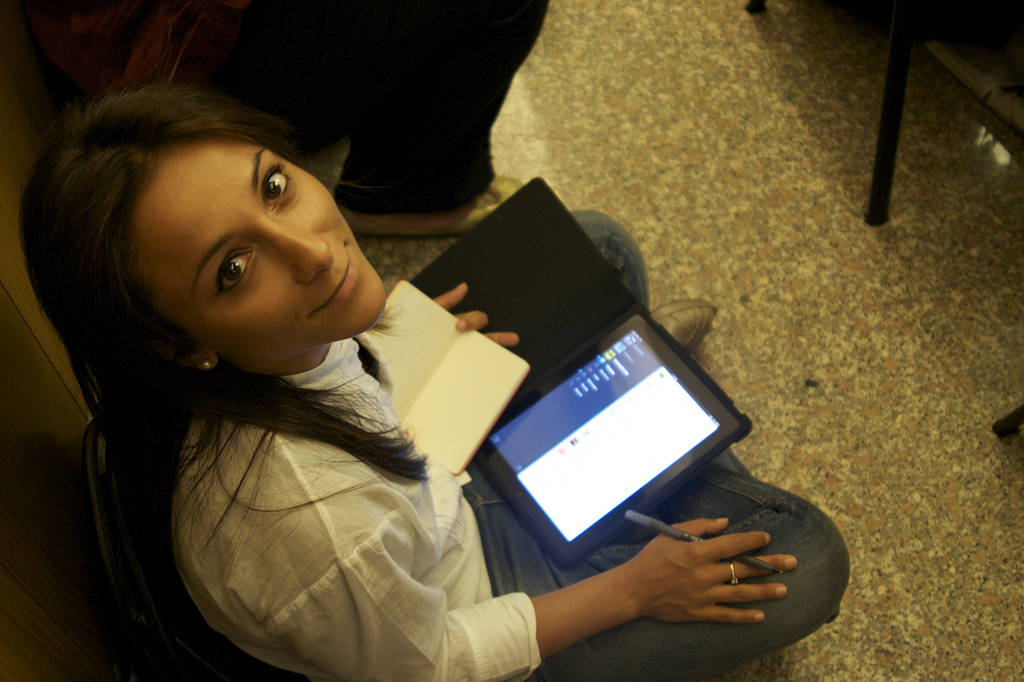
Are you feeling anxious or frustrated that you don’t have enough time? If you’ve got 20 minutes, I’ve got a new free webinar you’ll appreciate. In 5 Ways to Get More Done in Less Time you’ll learn:
This free, 20-minute webinar is a way to get you started with something I’m working with virtually all my coaching clients on: How to improve your efficiency while ALSO improving the quality of your work. Click here to sign up.